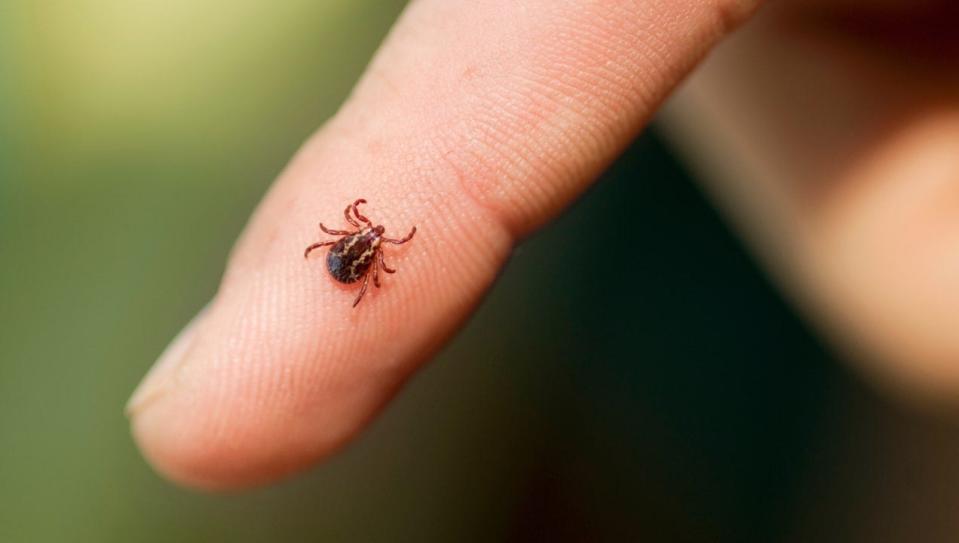How to remove a tick from a dog: Checking your pet, signs of tick-borne illness and bites
Maybe you’ve just gotten back from taking your dog on a hike through thick brush — or maybe you live in an area known to have lots of ticks. Either way, it’s important to keep your pup tick-free.
Despite your best efforts to keep your dog healthy, pests like ticks can sometimes cause health problems for pets. According to the American Kennel Club’s Canine Health Foundation, ticks can carry diseases such as ehrlichiosis, Rocky Mountain spotted fever and Lyme disease.
Veterinarians are able to treat most tick-borne infections, but you can do your part by making sure ticks aren’t living on your dog in the first place.
How to remove a tick from a dog
Before attempting to remove a tick, you must gather a few items. You’ll need gloves, disinfectant or antiseptic cream, isopropyl alcohol and tweezers or a tick remover tool, according to the Humane Society.
It’s important to wear gloves through the entire process so you don’t expose the tick to your skin.
If you’re using tweezers, you can remove the tick with these two steps:
Grab the tick as close to your dog’s skin as possible, without actually pinching your dog.
Pull the tick out, straight and steady. Do not jerk, as anything that detaches and stays behind could cause an infection.
If you’re using a tick remover, you can follow these simple steps:
Press the remover against your dog’s skin, next to the tick.
Slide the remover’s notch under the tick, and pull it free.
After you’ve removed the tick, place it in a small container of isopropyl alcohol, and record the date of when it was removed. According to the Humane Society, your veterinarian may want to examine the tick if your pet displays any signs of tick-borne illness.
Make sure to clean the bite with antiseptic or antibiotic ointment, and wash your tools in alcohol.

Why do dogs lick you? Explaining why your pet does it and when it might be too much.
How much food should you feed your dog? Here's the right amount to keep your pup healthy.
Signs of tick-borne illness in dogs
According to the Humane Society, signs of tick-borne illnesses include:
Arthritis or lameness lasting for three or four days
Reluctance to move
Swollen joints
Fever
Fatigue
Swollen lymph nodes
Loss of appetite
Neurological problems
Contact your veterinarian if your pet exhibits any of these signs.
How to check your dog for ticks
After you’ve been in a grassy or wooded area, it’s important to check your dog for ticks. According to Fetch by WebMD, you can use the following steps to check your pet:
Comb through your dog’s fur with your fingers, feeling gently for any bumps on its skin.
After checking their exposed fur, make sure to check in between their toes, inside the ears and in the folds around the face and neck.
If you feel a bump, part your pet’s fur to look at its skin. If you see a black, brown or grayish-brown bug, it’s likely a tick. You may also be able to see its legs.
How to prevent tick bites
To keep your dog from being bitten by a tick, you can take these precautions, according to the Humane Society:
Use a flea comb to groom your pet.
Vacuum regularly, and promptly dispose of the bags.
Mow areas of your yard where your dog likes to spend time.
Wash your pet’s bedding once a week.
Wash your pet with a pesticide-free shampoo.
How often should my dog see the vet? And how to know if your pet needs a checkup
This article originally appeared on USA TODAY: How to remove a tick from a dog and prevent future bites

